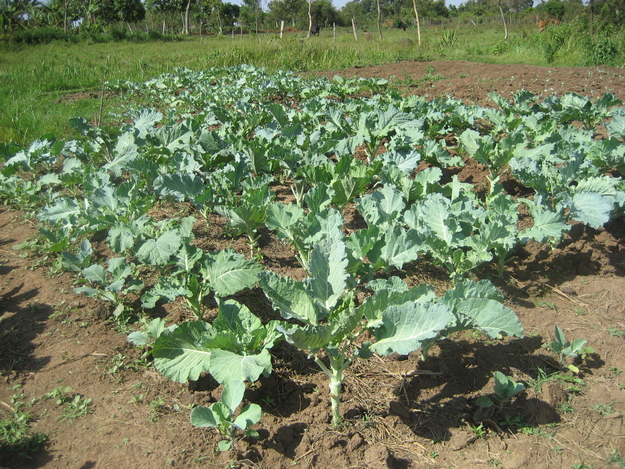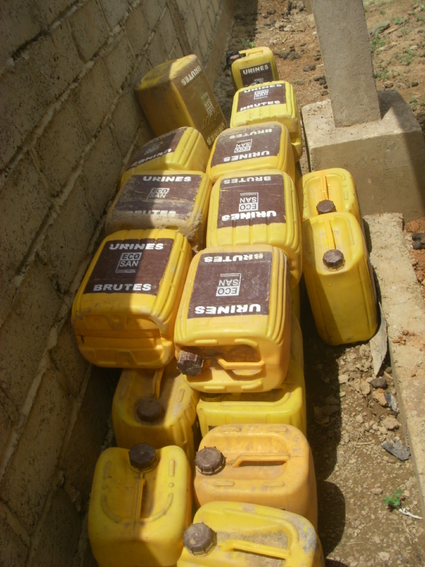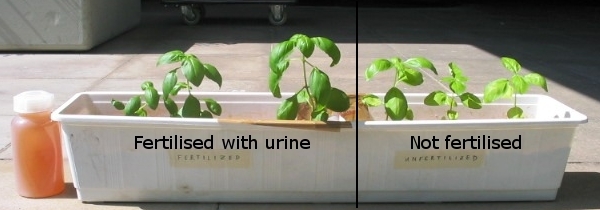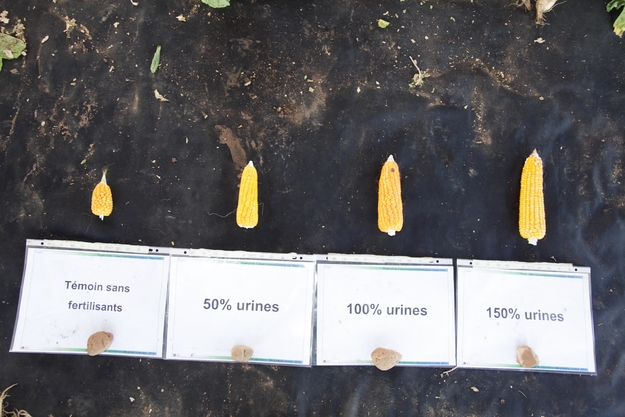At this point, we all know it: urine is a resource available for everyone for free, no matter the logistic and the economical status. Furthermore, even though its chemical composition always depends on the individual diet, it contains essential macro- and micronutrients and it is a high-quality, well-balanced, nitrogen-rich fertiliser with low levels of heavy metals. This is why it represents a valuable alternative in agricultural practices, especially in areas where poverty and malnutrition are widespread. Another fact that should push us towards such a re-use of urine is that simply flushing it away causes some nitrogen to reach natural waterways and this may off-balance ecosystems, favouring algae growth and depleting the overall oxygen supply, thus leading to the death of aquatic animals.
Provided safe handling is adopted, urine can be easily collected and used for a sustainable crop production that aims to recycle all excreta and biowaste and to maintain the fertility of the arable land. In particular, according to the Stockholm Environment Institute, one person's urine during one year suffices to fertilise 300-400 m² of crop to a level of about 50-100 kg N/ha.
Crops fertilised with urine - Plants fertilised with urine in Ugunja, Western Kenya
Collection and storage
Although health risks are very low (lower than using wastewater treatment sludge or farmyard manure), it is useful to take some precautions. Indeed, pee might be contaminated with pathogens. Therefore, it is important to make use of a toilet system that separates the faeces from the urine and to store the latter for at least one month in a sealed container. During storage a chemical reaction called hydrolysis takes place, the level of ammonia increases, and bacteria die off. As a consequence, it is safe to use urine to fertilise crops. Considering that the liquid is very corrosive, metals should not be used to store it, whereas resistant plastic tanks are just fine. Air contact should also be minimised. For vegetables that are eaten raw or have short rotation times, the longer the storage duration, the safer the consumption. The same is true if the external temperature is low, for instance in winter, and if urine comes from many different people and not from a single household. On the contrary, non-food crops, veggies that are going to be processed or cooked before consumption and plants that allow for a distance between soil and harvested products have a minimum risk and one-month-old urine is considered safe enough for fertilising. However, one has to keep in mind that urine releases ammonia over time, so that the pH raises from about 6-7 to 9-10. Consequently, stale urine should be applied directly to the soil or as close to the soil as possible and not on the plants, which would otherwise suffer because of the high level of ammonia.
Storage tanks for urine - Yellow tanks used to store urine in Burkina Faso
Application
For safety reason the application should happen no later than one month before harvest and urine should be incorporated into the soil as quickly as possible. For crops grown in rows, pee should be spread in a trench right next to the crops. If there is spacing between the plants, a dug hole can be created to apply urine. For trees, a circle corresponding to the circumference of the branches has to be drawn. In all cases, direct contact of the liquid with the plants should be avoided because of dangerous gaseous emissions, due to hygiene considerations and also in order to prevent the crops from burning. Watering down the soil after application helps reduce the smell.
The nitrogen demand and tolerance of a plant and its root size should be calculated in order to avoid over-application and toxicity. If needed, urine can be diluted just before application, but this will give it a larger volume for the same amount of nutrients, so that it takes longer to apply. Dilution is recommended in areas characterised by salinisation, since urine is per se a solution of salts. In these cases, urine-dripping should even be interchanged with water applications only.
Since potassium and phosphorus in urine are low, pee could be combined with complementary fertilisers or even human faeces. Yet attention must be paid when composting faeces because the risk of disease increases substantially. Using carbon-rich material such as leaves, wood chips, mulch, straw and earthy soil is also important to make sure that the nitrogen turns into nitrates that plants can uptake.
Regulatory framework
A final aspect that cannot underestimated when considering if you want to undertake urine-based cultivation is the legislation: as a matter of fact, countries often lack regulations concerning the use of urine for agriculture. Frequently, new local guidelines have to be developed so to shape farming activities and create a suitable legal framework. Sometimes it can be useful to start crop experiments – either demonstration trials or scientific research – to promote the use of urine as fertiliser.
Last but not least: it might be common sense, but protective clothing and handwashing with soap are always recommended to protect both the workers and the recipients of the products.
You can read further on the topic on Saniresch, SSWM, and Goveganic. The Stockholm Environment Institute also provides practical guidance here.

